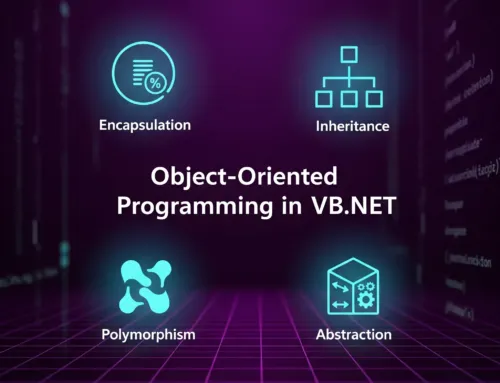
Approx. read time: 3.8 min.
Post: Helping humans speak to the computer
Helping Humans Speak to Computers: Building Purposeful Applications
When creating software applications, the most critical aspect is to understand that they serve as a bridge, helping humans communicate with computers. Whether you’re building a game, a spreadsheet, or any type of software, the purpose is the same: the user inputs data, the computer processes it, and the application returns a meaningful output.
How Applications Work: Simplifying Data Interaction
Every application exists to help humans interact with data in a simplified way. The better this communication, the better the user experience. As a developer, your job is to make this interaction smooth and intuitive.
Key steps in any application include:
- Input: Users provide data through an interface.
- Processing: The application manipulates this data.
- Output: The result is displayed to the user.
Designing Applications: Keep Users in Mind
When designing your application, always remember the user’s needs. A successful application should feel seamless. In an ideal scenario, the software becomes invisible, allowing the user to focus solely on the task at hand, whether it’s flying a spaceship in a game or calculating expenses in a spreadsheet.
How to Design for User Focus
Think about the best applications you’ve used. What makes them user-friendly? The most successful apps let users focus on their goals without being distracted by the mechanics of the software.
- Game applications are immersive because they allow the player to focus on the game world, not on the buttons and menus.
- Business applications are effective when they allow the user to focus on their data and tasks, not on the interface.
Learn From Existing Applications
A key step in becoming a successful software developer is learning from others. Analyze the applications you interact with and ask yourself these questions:
Questions to Ask When Using Applications
- What features are easy to use, and which are frustrating?
- How does the application make data input and interaction simple?
- What would you improve to enhance the user experience?
- Is the application distracting or does it allow the user to focus on the task?
By observing other apps, you’ll gain valuable insights into how to structure your own user interface (UI) and user experience (UX).
Designing With a Purpose
Before you begin coding, it’s essential to have a clear purpose for your application. Many failed projects lack focus because the developers didn’t ask the right questions from the start.
Essential Questions for Developers
- What problem is my application solving?
- Who is the target audience, and how will they benefit?
- What core functionality must the app provide to satisfy user expectations?
Answering these questions gives you direction and helps avoid common pitfalls. A well-defined purpose keeps the development process focused and efficient.
Building Your Application Step-by-Step
Successful developers follow a structured process when creating applications. By breaking down the project into manageable tasks, you can stay organized and on track.
Step 1: Planning
In this phase, outline the essential features your application must have. Create wireframes or sketches for your UI and decide how users will interact with the data.
Step 2: Building
Write clean, maintainable code. Your focus should always be on the user. Build the interface so it’s simple and intuitive, regardless of the user’s technical skill.
Step 3: Testing
As you build, continuously test your application. Feedback from real users is critical. This allows you to spot potential issues early and improve the app before release.
Evolving as a Developer
As you build more applications, your ability to help humans communicate with computers will grow. Always keep the user at the center of your design. The best applications aren’t just functional—they are also a joy to use.
By studying existing applications, maintaining a clear purpose, and following a structured development process, you’ll be well on your way to creating powerful and user-friendly software.
Key Takeaways for Developers
- Keep the user experience at the forefront.
- Learn from existing applications—both good and bad.
- Plan your application’s purpose and functionality.
- Break down your tasks into manageable steps.
- Test continuously to ensure usability.
By following these principles, you can design applications that truly help humans speak to computers in a meaningful way.
Related Videos:
Related Posts:
Open an existing support ticket
Directory Listing Batch Script
Guiding Your Child Through Life: A Holistic Approach from Education to Parenthood
Losing Your Sense of Purpose: Understanding, Overcoming, and Rediscovering Meaning
Conquering Shadows: My Journey of Overcoming Life’s Greatest Fears









